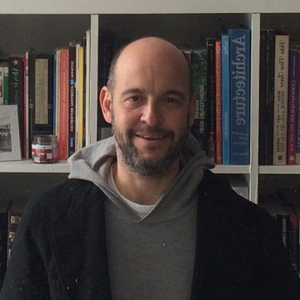
We talk about the things we do, Vivo en Queens, and the things we want to do, Quiero vivir en una mansión frente a Central Park. But how do we talk about talking? How do we relay the content of a conversation to a third party, or how do we bring up said conversation, which took place in the past, during a subsequent conversation with the same person?
We use what is known as el estilo indirecto, or the indirect style.
Consider the following conversation:
Juan: ¿Vives en Manhattan?
Alejandro: No.
Juan: ¿Dónde vives?
Alejandro: Vivo en Queens.
Juan: ¿Por qué no vives en Manhattan?
Alejandro: Porque es muy caro.
Juan: ¿Te gusta Queens?
Alejandro: Me gustan algunas cosas de Queens y de mi apartamento.
Juan: ¿Qué cosas te gustan de tu apartamento?
Alejandro: Me gusta la ubicación. Aunque está un poco lejos del metro, tengo un gimnasio, un supermercado y una lavandería a una cuadra del apartamento.
If I were to talk to a common friend, say Lucía, about my conversation with Juan, it would be almost impossible to replicate the whole thing verbatim. It wouldn’t sound too interesting or natural either.
Imagine something like, Juan me preguntó, “¿Vives en Manhattan?” y yo respondí, “No”. Después Juan me preguntó, “¿Dónde vives?” y yo respondí, “Vivo en Queens” and so on and so forth. Now imagine something like this, Juan me preguntó si vivía en Manhattan y le respondí que vivía en Queens. Me preguntó por qué no vivía en Queens y le expliqué que era muy caro. Luego me preguntó si me gustaba Queens y le dije que me gustaban algunas cosas de Queens y de mi apartamento. Finalmente, Juan me preguntó qué cosas me gustaban de mi apartamento y yo respondí que aunque estaba un poco lejos del metro, me gustaba tener un gimnasio, un supermercado y una lavandería muy cerca de mi apartamento.
If you spend time among Spanish speakers, read in Spanish, or watch tv series or movies in Spanish, you are likely to come across this form, as it is a very common way of speaking. Picture yourself speaking to a friend, in English, like so: Did you talk to Tim? Did you ask him if he was coming to the party? I spoke to him and he told me he was going to Jay-Z and Beyonce’s party. In Spanish this would be something like, ¿Hablaste con Tim? ¿Le preguntaste si venía a la fiesta? Hablé con él y me dijo que iba a ir a la fiesta de Jay-Z y Beyonce.
As you can see, this is common to both English and Spanish. How do we do it, en español? Here’s a breakdown:
Juan: ¿Vives en Manhattan?
Alejandro: No
Juan: ¿Dónde vives?
Alejandro: Vivo en Queens
1. Identify the indirect object. Juan me preguntó. When people ask us questions or tell us things, we are the indirect object. Yo le respondí. When we are talking about our conversations with third parties, those third parties are the indirect object, so, use le.
2. Figure out what kind of communication took place, and use a verb in the pretérito perfecto tense to reference it. The conversation took place in the past and it’s complete. Verbs that describe communication include: decir, preguntar, responder, and explicar, among others. Juan me preguntó, yo le respondí, le expliqué, le dije, le aclaré, etc.
3. Connect your verb with its direct object, the thing that was said, using a subordinating element: si(if), qué, dónde, porque, cuando, etc. Juan me preguntó si vivía en Manhattan. Yo le dije que vivía en Queens.
4. Rephrase the content of the conversation using pretérito imperfecto. Juan me preguntó si vivía en Manhattan. Yo respondí que no vivía en Manhattan. Juan me preguntó dónde vivía. Le dije que vivía en Queens.
5. Adjust possessives as needed. ¿Qué cosas te gustan de tu apartamento? Juan me preguntó qué cosas me gustaban de mi apartamento.
Understanding and mastering the indirect style is a very important step in achieving fluency and improving Spanish conversation skills. Now that you have read this article, we think you will start picking up on this style whenever you hear your friends, watch movies, or read in Spanish. With a bit of practice you will soon start using it too!

Alejandro Navarro is a former Spanish language instructor at Berges Institute.